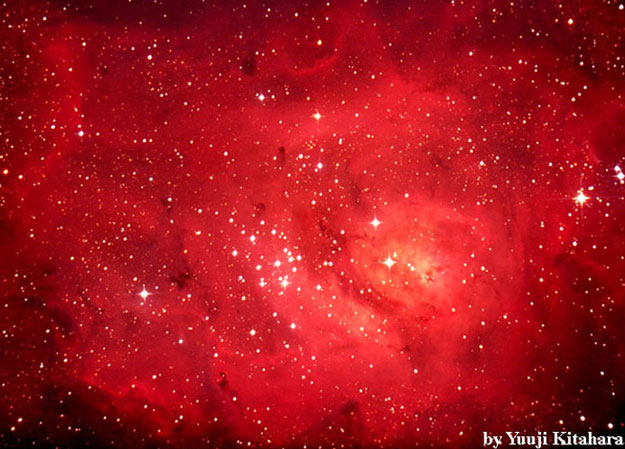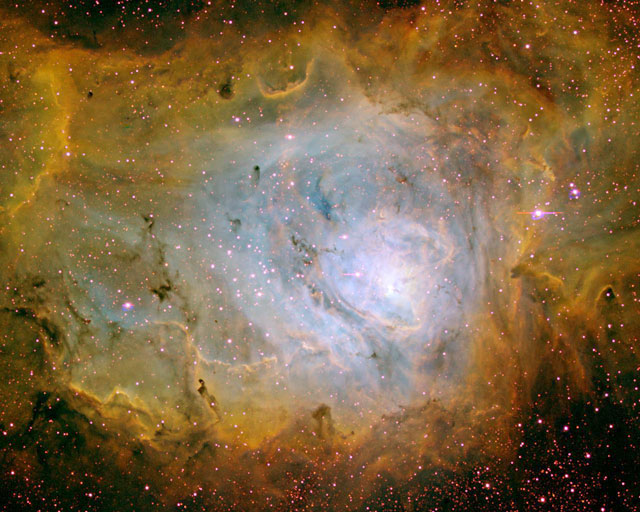Astronomy Picture of the Day
Discover the cosmos! Each day a different image or photograph of our fascinating universe is featured, along with a brief explanation written by a professional astronomer.
Posted on 03/03/2003 11:40:24 PM PST by petuniasevan
Discover the cosmos! Each day a different image or photograph of our fascinating universe is featured, along with a brief explanation written by a professional astronomer.
Explanation: The center of the Lagoon Nebula is busy with the awesome spectacle of star formation. Visible in the lower left, at least two long funnel-shaped clouds, each roughly half a light-year long, have been formed by extreme stellar winds and intense energetic starlight. The tremendously bright nearby star, Hershel 36, lights the area. Vast walls of dust hide and redden other hot young stars. As energy from these stars pours into the cool dust and gas, large temperature differences in adjoining regions can be created generating shearing winds which may cause the funnels. This picture, spanning about 5 light years, was taken in 1995 by the orbiting Hubble Space Telescope. The Lagoon Nebula, also known as M8, lies about 5000 light years distant toward the constellation of Sagittarius.

Notice all the objects in the area. It's a busy region; we're looking toward the center of the Milky Way!
Here is a "zoom-in" on the Lagoon Nebula:
The bright pink "flame" in the upper right is M8.
A 90-degree turn to the right from the above image:
The smaller nebula with blue reflection is the Trifid, M20.
The Lagoon Nebula shines by ionized hydrogen (energy source is hot, bright young stars) which emits red light as it reacquires electrons.
For contrast, here is the same nebula in a different light. It's the same technique used in many Hubble images. This image was produced combining three individual images obtained in three different filters, [OIII] (as blue channel), Halpha (as green channel) and [S II] (as red channel).

Disclaimer: Opinions posted on Free Republic are those of the individual posters and do not necessarily represent the opinion of Free Republic or its management. All materials posted herein are protected by copyright law and the exemption for fair use of copyrighted works.